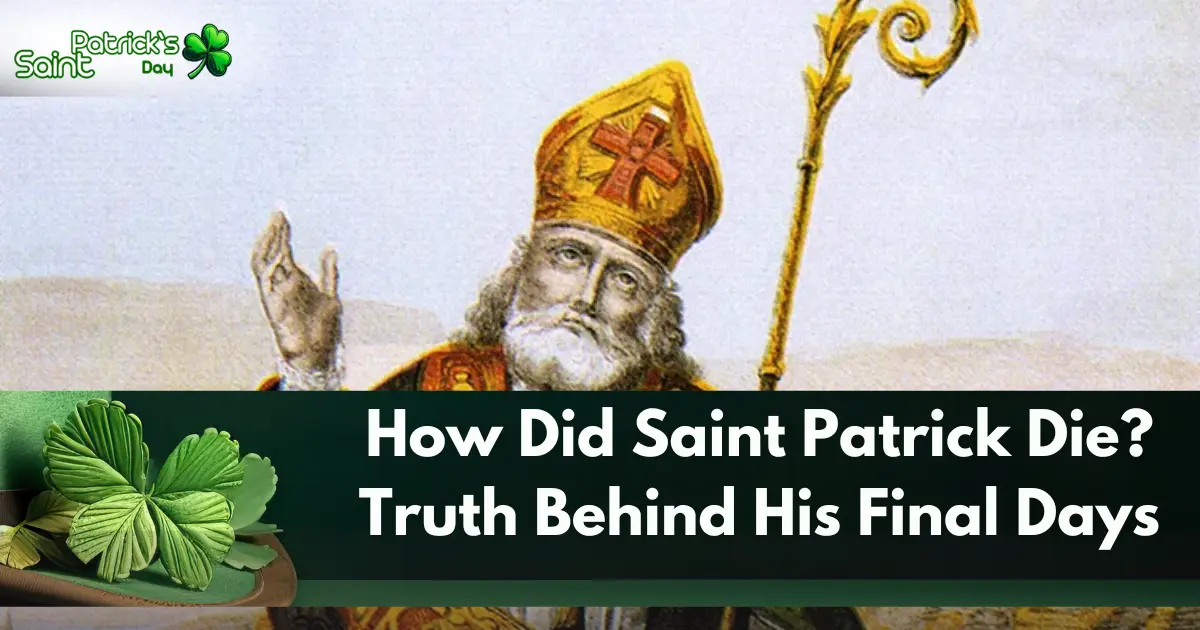Saint Patrick, the patron saint of Ireland, died on March 17, around 461 AD, in Saul, Ireland. While details about his death remain unclear, historical records suggest he passed away from natural causes, likely due to old age. His death led to the establishment of Saint Patrick’s Day, which is celebrated worldwide.
The Truth Behind Saint Patrick’s Death
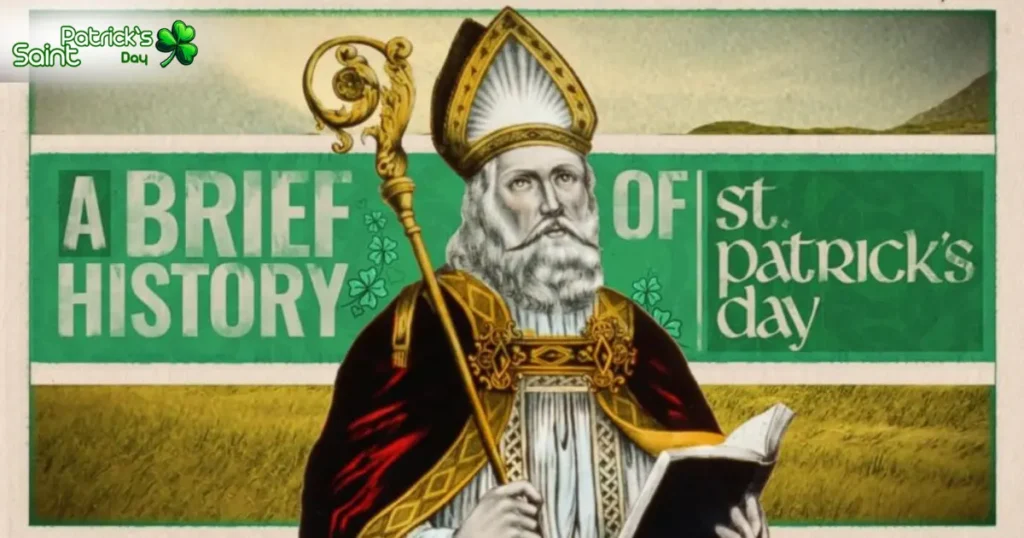
Who Was Saint Patrick? A Brief Overview
Saint Patrick was a 5th-century missionary and bishop credited with bringing Christianity to Ireland. Born in Roman Britain, he was kidnapped at the age of 16 by Irish raiders and forced into slavery. After six years, he escaped and later returned to Ireland as a Christian missionary, converting thousands to Christianity.
When Did Saint Patrick Die?
Historians believe that Saint Patrick died on March 17, around 461 AD, but some sources suggest a later date, possibly 493 AD. Despite the uncertainty, March 17 became an official day of remembrance for his work in Ireland.
Where Did Saint Patrick Die?
Historical texts indicate that Saint Patrick spent his last days in Saul, County Down, Ireland. Saul was where he built his first church, and it is believed that he chose to spend his final moments there.
How Did Saint Patrick Die?
Saint Patrick’s death remains a mystery as there are no detailed records. However, most scholars agree that he likely died of natural causes, possibly due to aging or illness. Unlike other saints, there are no records of martyrdom or violent death in his case.
Saint Patrick’s Burial Site
After his death, Saint Patrick was reportedly buried in Downpatrick, Northern Ireland. His grave is believed to be alongside two other saints, Saint Brigid and Saint Columba. Today, it is a major pilgrimage site for Christians.
The Impact of Saint Patrick’s Death on Ireland
Saint Patrick’s passing marked the end of an era for Irish Christianity. However, his teachings continued to influence Irish culture and religious practices for centuries. His legacy is celebrated not just in Ireland but worldwide, making him one of the most influential Christian figures in history.
Myths, Legends, and Historical Debates About Saint Patrick’s Death
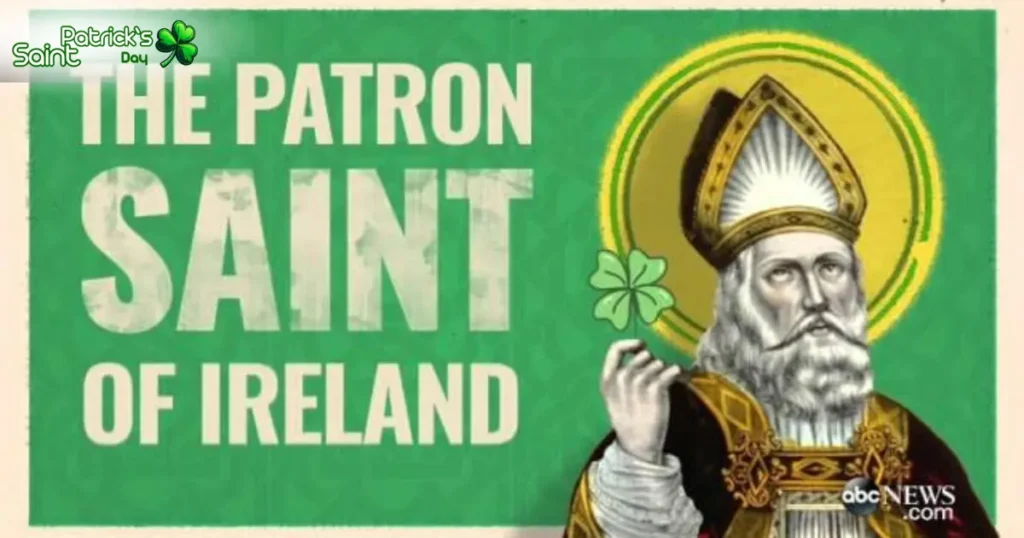
The Mystery Surrounding Saint Patrick’s Death
Despite being one of Ireland’s most famous figures, Saint Patrick’s death remains a topic of debate among historians and scholars. While many agree he died of natural causes, there are multiple accounts, myths, and conflicting historical records that raise questions about his final moments.
Let’s explore the various theories, myths, and historical debates regarding how Saint Patrick died and what truth lies behind them.
Historical Confusion | Did Saint Patrick Die in 461 or 493 AD?
Conflicting Dates of Death
Most historical records claim that Saint Patrick died in 461 AD, but some sources suggest 493 AD as the actual date.
The confusion arises because two different dates were recorded by various Christian historians over the centuries. Some believe that the later date refers to another bishop named Patrick, often confused with the original Saint Patrick.
The “Two Patricks” Theory
Some historians argue that there may have been two different men named Patrick, which explains the conflicting timelines. The first Patrick, also called Palladius, was a missionary sent to Ireland before the more famous Saint Patrick.
This theory suggests that some historical accounts merged both figures, leading to confusion about when the real Saint Patrick actually died.
Popular Myths and Legends About Saint Patrick’s Death
1. The Angelic Prophecy
One legend states that before his death, angels appeared to Saint Patrick, warning him about his final days. According to this tale, he knew the exact date of his death and spent his last moments in prayer and devotion to God.
2. The Poisoning Myth
A lesser-known but intriguing myth suggests that Saint Patrick was poisoned by Druids, who opposed his Christian teachings. However, there is no historical evidence to support this claim, and most scholars dismiss it as fiction.
3. The Peaceful Passing
The most widely accepted story is that Saint Patrick died peacefully in Saul, County Down, surrounded by his followers. Many believe he spent his final days in prayer, knowing that his mission of spreading Christianity in Ireland was complete.
Why Saint Patrick’s Death is Still a Mystery
Lack of First-Hand Accounts
One of the biggest challenges in understanding Saint Patrick’s death is the lack of contemporary records. Most of the writings about his life and death come from later sources, which means some details may have been altered or exaggerated over time.
The Influence of Oral Traditions
Much of what we know about Saint Patrick’s life and death was passed down through oral traditions. As a result, stories evolved over centuries, making it difficult to separate fact from myth.
The Role of the Church
The Christian Church played a significant role in shaping Saint Patrick’s legacy. Over time, his story was adapted to fit religious narratives, which may have influenced how his death was recorded.
The Significance of Saint Patrick’s Death
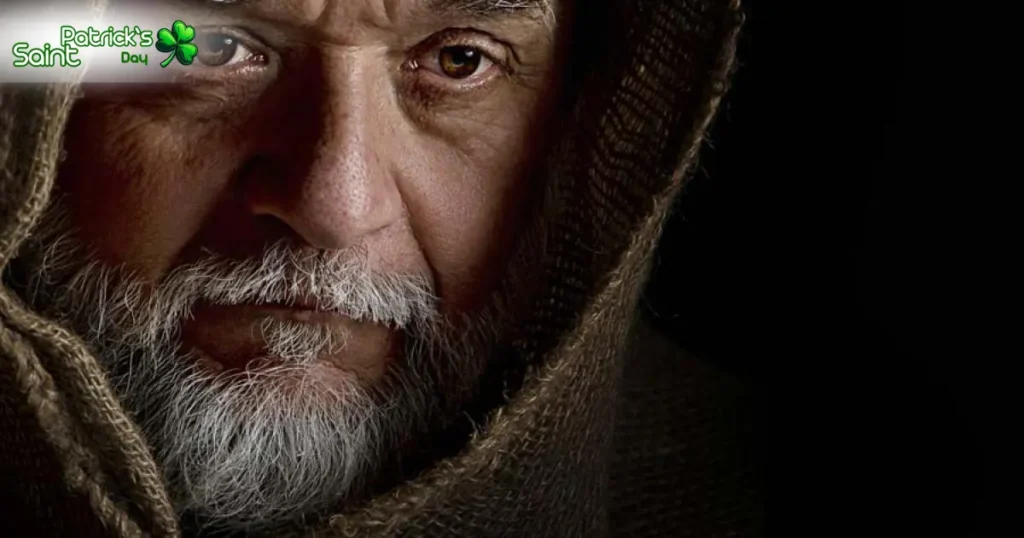
1. Establishing Saint Patrick’s Day
The date of March 17 became Saint Patrick’s Day to honor his contributions to Christianity. Over time, it transformed from a religious observance into a global celebration of Irish heritage.
2. His Canonization and Sainthood
Interestingly, Saint Patrick was never officially canonized by the Catholic Church, as the practice of formal canonization did not exist at the time. However, he was recognized as a saint by popular devotion and the spread of his teachings.
3. The Influence on Irish Christianity
Even after his death, Saint Patrick’s influence continued to shape Irish Christianity. Monasteries, churches, and schools were established in his honor, ensuring that his teachings lived on for generations.
Myths, Legends, and Historical Debates About Saint Patrick’s Death
The Mystery Surrounding Saint Patrick’s Death
Despite being one of Ireland’s most famous figures, Saint Patrick’s death remains a topic of debate among historians and scholars. While many agree he died of natural causes, there are multiple accounts, myths, and conflicting historical records that raise questions about his final moments.
Let’s explore the various theories, myths, and historical debates regarding how Saint Patrick died and what truth lies behind them.
Historical Confusion | Did Saint Patrick Die in 461 or 493 AD?
Conflicting Dates of Death
Most historical records claim that Saint Patrick died in 461 AD, but some sources suggest 493 AD as the actual date.
The confusion arises because two different dates were recorded by various Christian historians over the centuries. Some believe that the later date refers to another bishop named Patrick, often confused with the original Saint Patrick.
The “Two Patricks” Theory
Some historians argue that there may have been two different men named Patrick, which explains the conflicting timelines. The first Patrick, also called Palladius, was a missionary sent to Ireland before the more famous Saint Patrick.
This theory suggests that some historical accounts merged both figures, leading to confusion about when the real Saint Patrick actually died.
Popular Myths and Legends About Saint Patrick’s Death
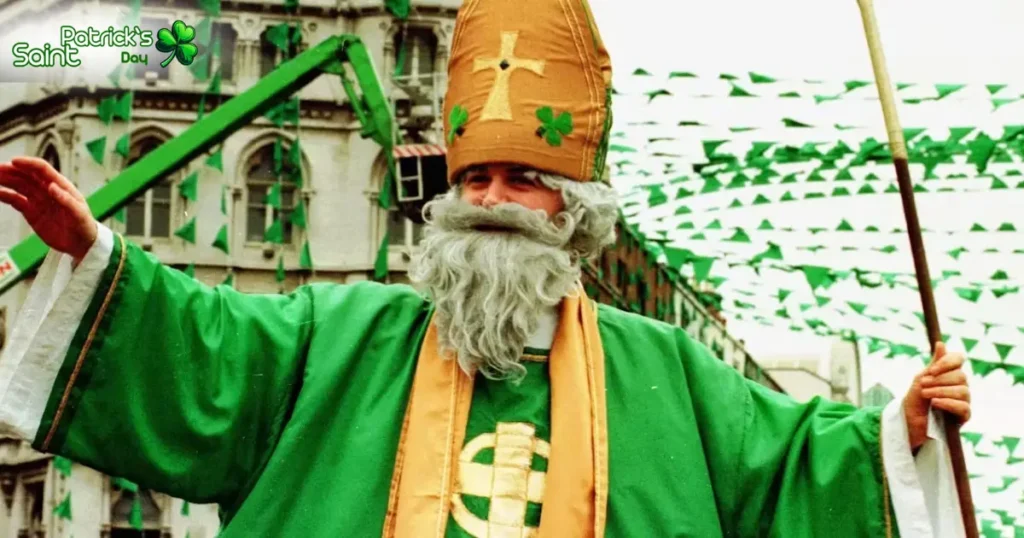
1. The Angelic Prophecy
One legend states that before his death, angels appeared to Saint Patrick, warning him about his final days. According to this tale, he knew the exact date of his death and spent his last moments in prayer and devotion to God.
2. The Poisoning Myth
A lesser-known but intriguing myth suggests that Saint Patrick was poisoned by Druids, who opposed his Christian teachings. However, there is no historical evidence to support this claim, and most scholars dismiss it as fiction.
3. The Peaceful Passing
The most widely accepted story is that Saint Patrick died peacefully in Saul, County Down, surrounded by his followers. Many believe he spent his final days in prayer, knowing that his mission of spreading Christianity in Ireland was complete.
Why Saint Patrick’s Death is Still a Mystery
Lack of First-Hand Accounts
One of the biggest challenges in understanding Saint Patrick’s death is the lack of contemporary records. Most of the writings about his life and death come from later sources, which means some details may have been altered or exaggerated over time.
The Influence of Oral Traditions
Much of what we know about Saint Patrick’s life and death was passed down through oral traditions. As a result, stories evolved over centuries, making it difficult to separate fact from myth.
The Role of the Church
The Christian Church played a significant role in shaping Saint Patrick’s legacy. Over time, his story was adapted to fit religious narratives, which may have influenced how his death was recorded.
The Significance of Saint Patrick’s Death
1. Establishing Saint Patrick’s Day
The date of March 17 became Saint Patrick’s Day to honor his contributions to Christianity. Over time, it transformed from a religious observance into a global celebration of Irish heritage.
2. His Canonization and Sainthood
Interestingly, Saint Patrick was never officially canonized by the Catholic Church, as the practice of formal canonization did not exist at the time. However, he was recognized as a saint by popular devotion and the spread of his teachings.
3. The Influence on Irish Christianity
Even after his death, Saint Patrick’s influence continued to shape Irish Christianity. Monasteries, churches, and schools were established in his honor, ensuring that his teachings lived on for generations.
The Legacy of Saint Patrick and Why His Death Still Matters
Saint Patrick’s death on March 17 has become a historical milestone, marking the foundation of Saint Patrick’s Day and the spread of Christianity in Ireland. While details about his final moments remain unclear, his influence on Irish culture, faith, and global celebrations is undeniable.
This session explores how Saint Patrick’s death shaped history, his spiritual legacy, and why his story continues to inspire people worldwide.
Saint Patrick’s Death | A Symbol of Faith and Devotion
1. A Life Dedicated to Christianity
Saint Patrick’s journey from captivity to missionary work symbolizes resilience, faith, and divine calling. His death marked the end of his earthly mission but the beginning of a lasting spiritual legacy.
2. His Teachings Spread After His Death
Following his death, monasteries and churches were built in his honor, preserving his teachings. His disciples continued his mission, spreading Christianity beyond Ireland.
3. The Making of a National Saint
Even though Saint Patrick was never officially canonized, he became Ireland’s most revered saint. His death anniversary turned into a sacred day of remembrance, later evolving into a global cultural festival.
How Saint Patrick’s Death Led to the Birth of Saint Patrick’s Day
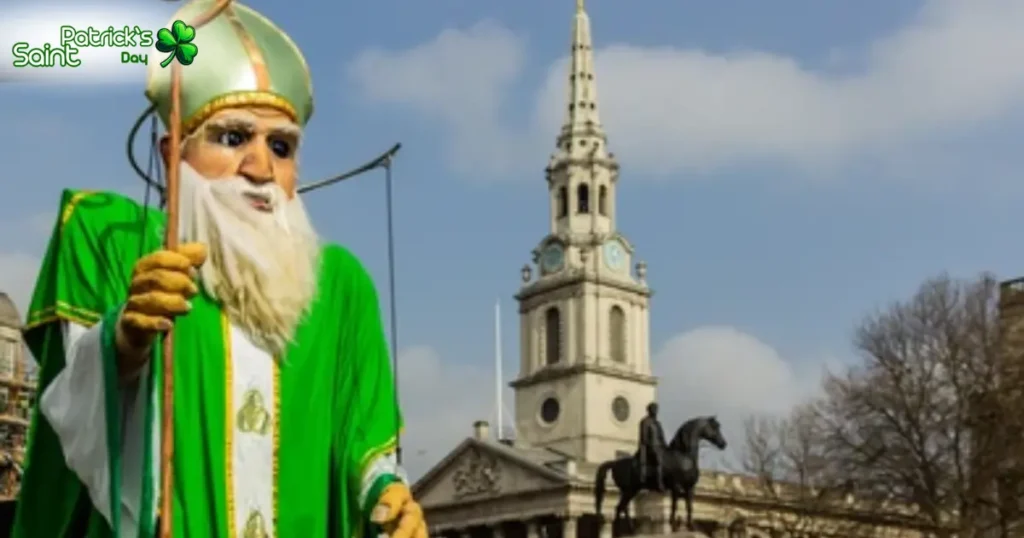
1. The Origins of the Celebration
In the years following his death, Irish Christians held annual feasts and religious gatherings to commemorate Saint Patrick’s contributions. Over time, March 17 became a fixed date for these observances.
2. The Evolution of Saint Patrick’s Day
Initially a religious holiday, Saint Patrick’s Day transformed into a national celebration of Irish heritage. Today, it is marked by parades, feasts, and global festivities.
3. A Global Phenomenon
Although Saint Patrick lived and died in Ireland, his legacy spread across the world. Today, cities like New York, Chicago, London, and Sydney celebrate Saint Patrick’s Day with grand parades, green-themed festivities, and cultural events.
Saint Patrick’s Burial Site and Pilgrimage Traditions
1. Where is Saint Patrick Buried?
Saint Patrick is believed to be buried in Downpatrick, Northern Ireland, alongside Saint Brigid and Saint Columba. His grave remains one of the most significant pilgrimage sites in Ireland.
2. Why People Visit His Grave?
Every year, thousands of people visit Saint Patrick’s grave to pay respects, offer prayers, and honor his contributions to Christianity.
3. The Famous Saint Patrick’s Trail
Ireland has established Saint Patrick’s Trail, a route that leads visitors through historic sites related to his life and mission.
The Enduring Legacy of Saint Patrick’s Death
1. A Symbol of Irish Identity
Saint Patrick’s life and death are deeply connected to Irish culture, history, and religious identity. His legacy inspires millions of people, both in Ireland and across the world.
2. His Influence on Modern Christianity
Even centuries after his death, Saint Patrick’s teachings continue to guide believers. His work in spreading Christianity and his devotion to faith remain an inspiration for missionaries and spiritual leaders.
3. Saint Patrick’s Impact on Global Celebrations
Saint Patrick’s name lives on through Saint Patrick’s Day, which unites people of all backgrounds in celebrating Irish culture and history. His death led to one of the world’s most widely celebrated cultural events.
Conclusion
Saint Patrick’s death is more than just a historical event—it is a symbol of faith, perseverance, and the spread of Christianity. While the details of his passing remain uncertain, the impact of his life is undeniable.
His death on March 17 transformed into a global celebration, making Saint Patrick’s legacy eternal.
FAQs
Saint Patrick is believed to have died of natural causes, possibly due to old age, on March 17, around 461 AD.
Historical records suggest he passed away in Saul, County Down, Ireland, where he had built a church.
Saint Patrick’s birth year is uncertain, but he is estimated to have been around 75 to 80 years old at the time of his death.
March 17 marks the date of Saint Patrick’s death, and it is celebrated globally to honor his contributions to Christianity in Ireland.
It is believed that Saint Patrick’s grave is in Downpatrick, Northern Ireland, alongside Saints Brigid and Columba.
